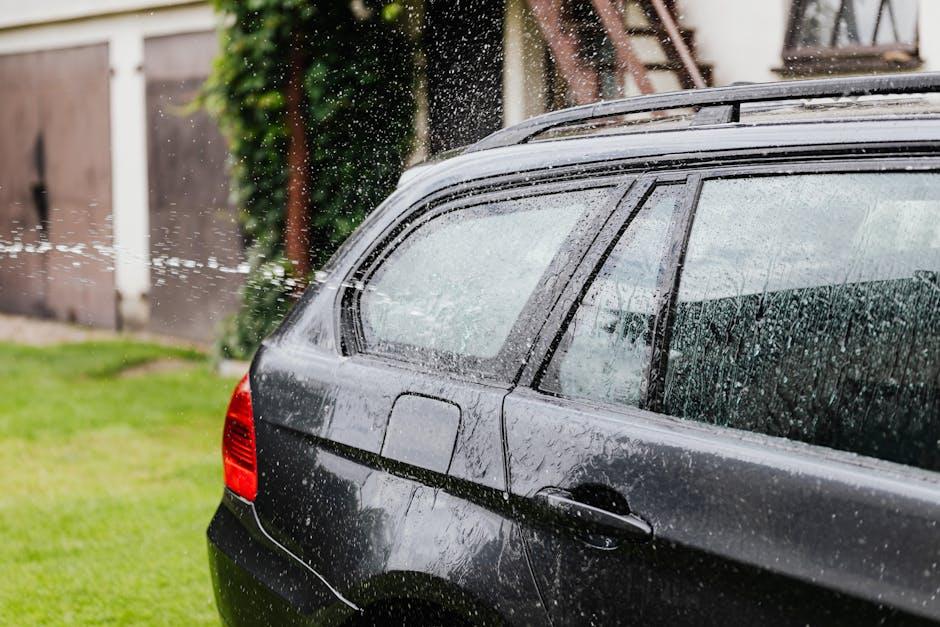A gleaming set of rims and spotless tires can transform the look of any vehicle, turning an everyday ride into a head-turning masterpiece. Yet, the path to that showroom shine isn’t always straightforward. Dust, brake dust, grime, and road debris wage a constant war against your wheels, demanding more than just a casual rinse. In this guide, we’ll explore effective and practical techniques to clean your car rims and tires, helping you restore their original luster without fuss. Whether you’re a seasoned car enthusiast or a weekend warrior, these tips will ensure your wheels not only look great but also maintain their durability for miles to come.
Table of Contents
- Preparing Your Workspace and Gathering Essential Cleaning Supplies
- Understanding Different Rim and Tire Materials for Effective Cleaning
- Step-by-Step Guide to Removing Dirt and Brake Dust from Rims
- Choosing the Right Tire Cleaner and Protectant for Lasting Shine
- Tips for Cleaning Hard-to-Reach Areas and Preventing Damage
- Finishing Touches to Enhance Appearance and Extend Tire Life
- Q&A
- Insights and Conclusions
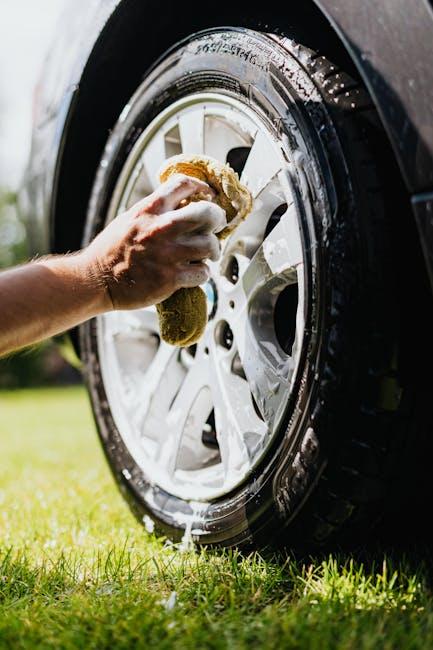
Preparing Your Workspace and Gathering Essential Cleaning Supplies
Before diving into the cleaning process, setting up a well-organized workspace is crucial for efficiency and safety. Choose a shaded or covered area, preferably on a flat surface, to avoid dirt and grime sticking to your rims and tires due to direct sunlight. Lay down a sturdy tarp or plastic sheet to catch any runoff or drips, protecting your driveway and making cleanup easier afterwards. Adequate lighting—natural or artificial—will help you spot stubborn dirt and brake dust hiding within the grooves and corners of your rims.
Gather all essential supplies before you start to avoid interruptions. Having everything at arm’s reach streamlines the task and ensures you use the right product for each part of the cleaning process. Recommended are these must-haves:
- Wheel cleaner: A non-acidic, rim-specific solution safe for all finishes.
- Tire brush: Stiff bristles to scrub off road grime.
- Microfiber towels: Soft, lint-free cloths for drying and polishing.
- Bucket with warm water: For rinsing brushes and cloths.
- Gloves: To protect your hands from harsh chemicals.
| Supply | Purpose | Tip |
|---|---|---|
| Wheel Cleaner | Breaks down stubborn brake dust and grime | Choose pH-balanced for delicate finishes |
| Tire Brush | Scrubs dirt from tire treads | Use firm bristles but avoid damaging sidewalls |
| Microfiber Towels | Drying and polishing surfaces | Use separate towels for rims and tires |
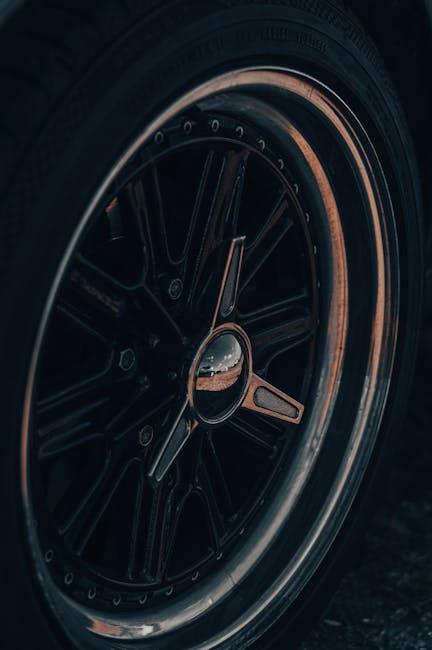
Understanding Different Rim and Tire Materials for Effective Cleaning
Car rims and tires come in a variety of materials, each demanding a tailored cleaning approach to maintain their finish and longevity. Aluminum and alloy rims, for instance, are popular for their lightweight and shine but are prone to brake dust and corrosive buildup. Using a pH-balanced cleaner designed specifically for metals ensures grime is lifted without dulling the finish. On the other hand, chrome rims require gentle, non-abrasive products to preserve their reflective surface and prevent pitting. For more delicate surfaces like painted or powder-coated rims, mild cleaners and soft brushes are ideal to avoid scratching or peeling.
Tires, composed primarily of rubber compounds, benefit from products that both clean and protect. Using harsh chemicals can strip away essential oils, leading to cracking and fading. Here’s a quick guide to common rim and tire materials with their recommended cleaning methods:
| Material | Recommended Cleaner | Cleaning Tips |
|---|---|---|
| Aluminum/Alloy | pH-balanced metal cleaner | Use soft brushes; avoid acid-based products |
| Chrome | Non-abrasive polish | Gentle wipes; dry immediately to prevent spots |
| Painted/Powder-coated | Mild detergent solution | Avoid scrubbing pads; rinse thoroughly |
| Rubber Tires | Water-based rubber cleaner & protectant | Apply evenly; avoid solvent-based cleaners |
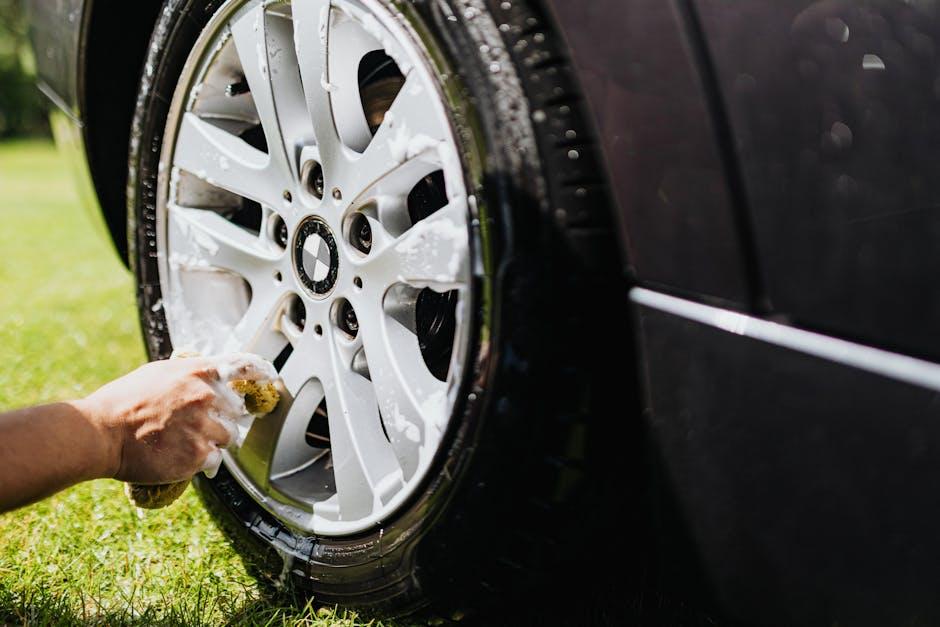
Step-by-Step Guide to Removing Dirt and Brake Dust from Rims
Begin by rinsing your rims with water to dislodge loose dirt and debris. Next, apply a specialized wheel cleaner formulated to target brake dust without damaging the rim’s finish. Let the cleaner sit for a few minutes to break down stubborn grime. Using a soft-bristled brush, gently scrub each section of the rim, paying close attention to crevices and lug nuts where dirt accumulates. Avoid using abrasive materials that can scratch the surface, and remember to frequently rinse the brush to prevent redepositing dirt.
Once the grime is loosened, thoroughly rinse the rims with clean water. For persistent brake dust, repeat the application of cleaner and brushing as needed. After the rims are spotless, dry them with a microfiber cloth to prevent water spots. To maintain their shine and protect against future buildup, consider applying a wheel sealant or wax. Below is a simple checklist to keep your cleaning process organized:
- Rinse thoroughly to loosen dirt
- Apply wheel cleaner evenly
- Use soft brush on all surface areas
- Rinse and inspect for stubborn spots
- Dry with microfiber cloth
- Apply protective sealant or wax
| Step | Recommended Tool/Product | Purpose |
|---|---|---|
| 1 | High-pressure water hose | Remove loose dirt |
| 2 | Specialized wheel cleaner | Dissolve brake dust |
| 3 | Soft-bristled brush | Scrub grime gently |
| 4 | Microfiber cloth | Dry without scratching |
| 5 | Wheel sealant or wax | Protect and shine |
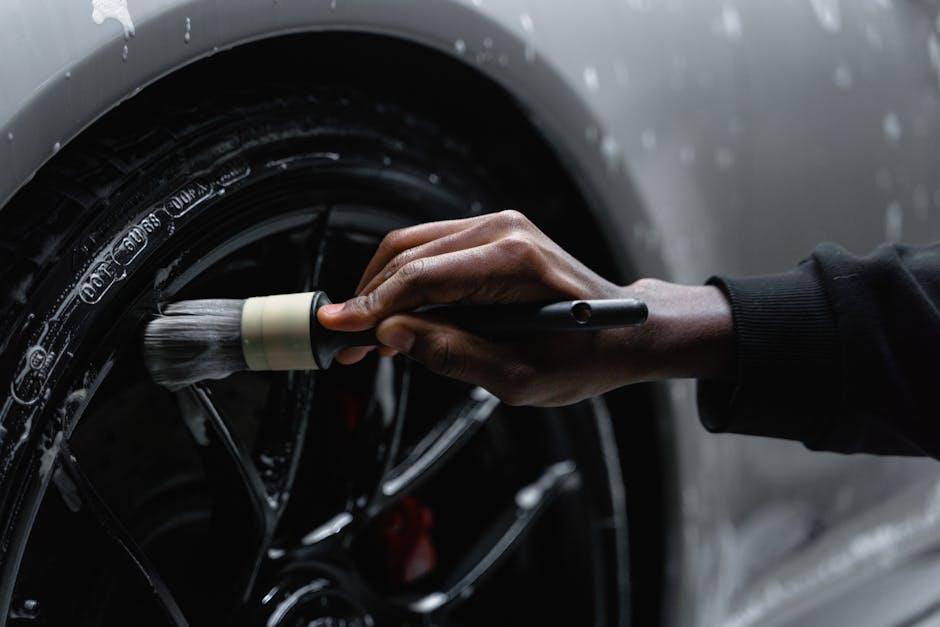
Choosing the Right Tire Cleaner and Protectant for Lasting Shine
When selecting a tire cleaner and protectant, it’s essential to consider both the ingredients and the specific benefits they bring to your car’s wheels. Opt for products that are pH-balanced and free from harsh chemicals like petroleum, which can dry out or damage the rubber over time. Look for cleaners that not only remove dirt and brake dust effectively but also prepare the tire surface for protection, creating a long-lasting barrier against grime and UV rays. Equally important is choosing a protectant that offers a natural matte or satin finish rather than an overly glossy look, helping your tires maintain a fresh appearance without attracting excessive dirt.
Below is a quick guide to help you identify the best type of product for your tire care routine:
| Type | Key Features | Best For |
|---|---|---|
| Water-based Cleaners | Safe for rubber, non-toxic | Regular maintenance, environmentally friendly |
| Solvent-based Protectants | Deep shine, long-lasting protection | Show cars, infrequent use |
| Silicone-based Sprays | Hydrophobic effect, UV defense | Everyday use, moderate shine |
- Test compatibility: Always try a small area first to avoid discoloration.
- Layer protection: Apply multiple light coats for enhanced durability.
- Avoid over-application: Excess product can attract dust and make tires slippery.
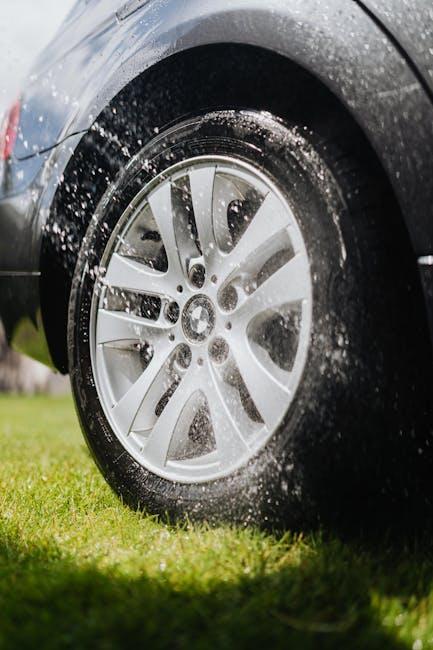
Tips for Cleaning Hard-to-Reach Areas and Preventing Damage
Addressing those nooks and crannies on your rims requires a blend of patience and the right tools. Invest in soft-bristled brushes with flexible handles that can easily navigate spokes and lug nuts without scratching the surface. Microfiber cloths paired with a gentle, pH-balanced cleaner will help you avoid abrasive damage. For stubborn grime in tight spaces, a toothbrush or detailing swabs are perfect for precision work, ensuring every corner gleams without compromising the rim’s finish.
Always remember to protect your wheels during cleaning by following these simple practices:
- Avoid harsh chemicals that can corrode metal or damage paint.
- Rinse with cool water before and after using any cleaning products to prevent residue buildup.
- Work in shaded areas to stop cleaners from drying too quickly and leaving spots.
- Use separate brushes for rims and tires to prevent cross-contamination.
| Cleaning Tool | Best For | Care Tip |
|---|---|---|
| Soft-bristled Wheel Brush | Spokes and Lug Nuts | Rinse after each use |
| Microfiber Cloth | Surface Polishing | Wash separately |
| Detailing Swabs | Hard-to-Reach Grooves | Use disposable for best hygiene |
| Toothbrush | Precision Dirt Removal | Replace every 3 months |
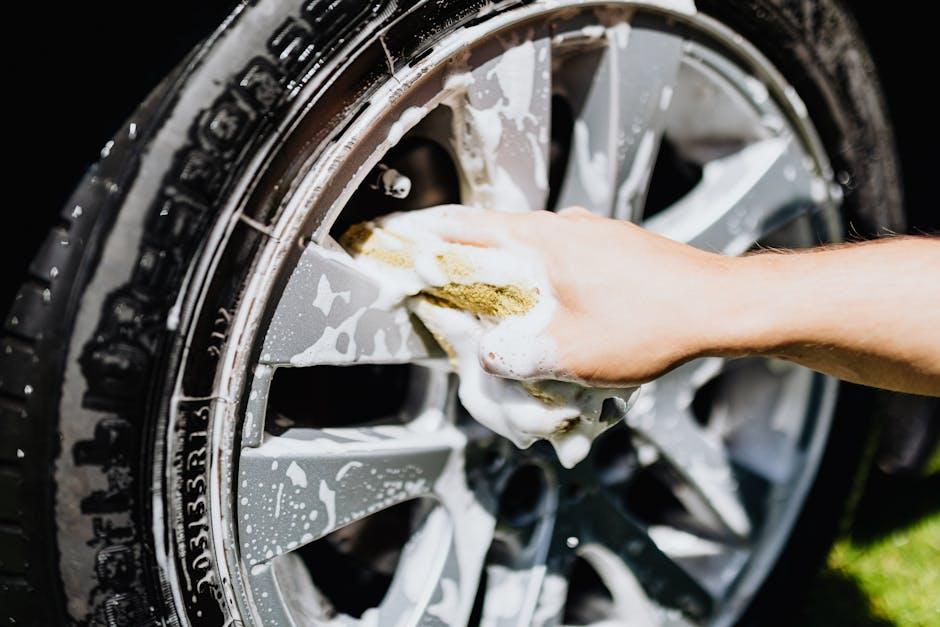
Finishing Touches to Enhance Appearance and Extend Tire Life
Once your rims and tires gleam, the real secret to long-lasting charm lies in applying the right protective layers. Use a high-quality tire dressing to add that deep, rich black finish while shielding your rubber from UV damage and cracking. Be sure to choose a water-based formula if you prefer a subtle, non-greasy shine that resists dust buildup. For rims, a slick wax or sealant not only enhances the visual appeal but forms a barrier against brake dust, road salt, and grime—making future cleanings easier and preserving the rim’s factory finish.
Don’t forget these finishing steps to truly complete the job:
- Inspect Tire Pressure: Proper tire inflation extends tread life and improves fuel efficiency.
- Apply Tire Protectant Evenly: Avoid sling by applying carefully and sparingly.
- Use Microfiber Towels: Buff rims to a mirror-like shine without scratching.
Q&A
Q&A: How to Clean Car Rims and Tires
Q1: Why is it important to clean car rims and tires regularly?
A1: Cleaning your car rims and tires not only keeps your vehicle looking sharp and well-maintained but also helps prevent the buildup of brake dust, grime, and road salt. This buildup can accelerate corrosion on rims and degrade tire rubber over time, affecting both aesthetic appeal and performance.
Q2: What basic supplies do I need to clean my car rims and tires at home?
A2: To get started, you’ll need a bucket of water, a hose or spray bottle, a specialized wheel cleaner (appropriate for your rim type), a tire cleaner or all-purpose cleaner, a soft-bristle brush or wheel brush, a stiff brush for tires, microfiber cloths for drying, and optionally a tire shine product for that final glossy touch.
Q3: Can I use regular car soap to clean my rims and tires?
A3: While regular car soap can remove surface dirt, it often lacks the strength to break down stubborn brake dust and grime on rims or the dirt embedded in tire grooves. Using dedicated rim and tire cleaners ensures a deeper, safer clean without damaging finishes or rubber.
Q4: Should I clean my rims and tires before or after washing the car body?
A4: It’s best to clean rims and tires after washing the car body or at least rinse the wheels first. This sequence prevents dirty water and cleaning agents from splashing onto the clean bodywork. Wheels are typically the dirtiest part, so treating them separately helps avoid cross-contamination.
Q5: What’s the proper technique for cleaning rims without damaging them?
A5: Spray a generous amount of wheel cleaner and let it sit for a few minutes to loosen grime (check product instructions for timing). Then use a soft wheel brush to gently scrub all surfaces, including tight spots like lug nuts and spokes. Avoid harsh brushes or abrasive pads that can scratch delicate finishes. Rinse thoroughly and dry with microfiber cloths.
Q6: How do I ensure the tires stay clean and look fresh?
A6: Use a stiff-bristled brush with a tire-specific cleaner or all-purpose cleaner to scrub tire sidewalls, removing dirt and old tire dressing residues. Rinse well. Once dry, apply a tire dressing or protectant to restore a deep black sheen and offer some protection against UV damage and cracking.
Q7: Are there any precautions I should take regarding my rims’ material?
A7: Yes! Different materials like aluminum, chrome, painted, or alloy rims require tailored care. For example, acidic cleaners can harm painted or polished rims. Always check the cleaner’s label and test on a small area first. When in doubt, select pH-balanced, non-acidic products to be safe.
Q8: How often should I clean my rims and tires?
A8: A good rule of thumb is to clean your rims and tires every two weeks to monthly, depending on how often you drive and road conditions. More frequent cleaning can prevent stubborn brake dust buildup and keep tires looking their best.
Q9: Can professional detailing offer benefits over DIY cleaning?
A9: Professional detailers have specialized equipment and products that can deeply clean, polish, and protect rims and tires, sometimes extending their lifespan and appearance beyond DIY efforts. However, regular at-home maintenance goes a long way in keeping your car looking fresh between professional visits.
Q10: What common mistakes should I avoid when cleaning rims and tires?
A10: Avoid using harsh household cleaners, wire brushes, or abrasive tools on rims. Don’t forget to rinse off cleaners completely, as residues can cause damage. Also, avoid getting tire dressing on your brakes or wheels, as it can make surfaces slippery and unsafe. Finally, never clean rims and tires under direct sunlight to prevent cleaning agents from drying too quickly and leaving spots.
Keeping your car’s rims and tires spotless doesn’t have to be a chore—it’s all about knowing the right tools, techniques, and a little patience. With these tips, your wheels will gleam as brightly as your next adventure calls!
Insights and Conclusions
Cleaning your car’s rims and tires is more than just a routine chore—it’s an opportunity to bring out the shine and personality of your vehicle. With the right tools, a bit of patience, and these simple techniques, maintaining that fresh, showroom look becomes effortless. So next time you roll into the garage, embrace the process as a small ritual of care that not only boosts your car’s appearance but prolongs its life on the road. After all, every great journey deserves to start with a clean, confident ride.

